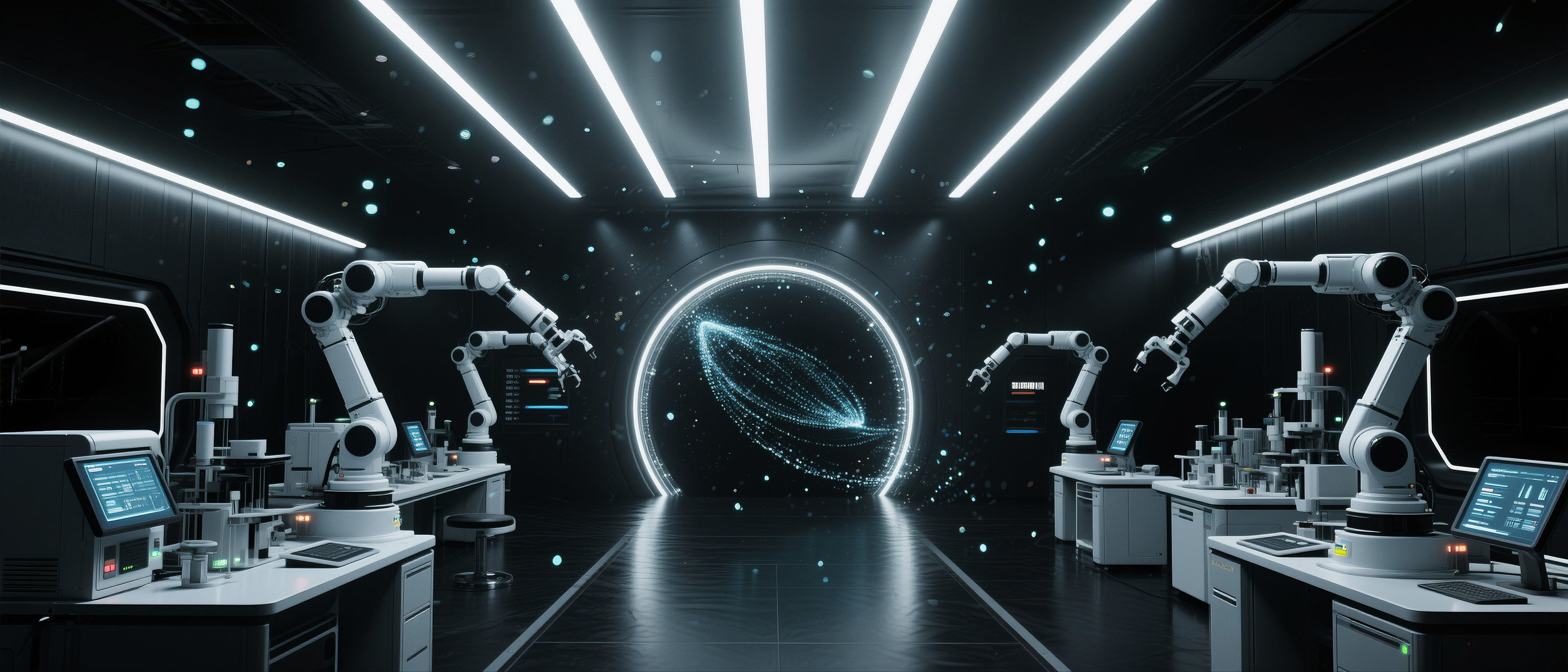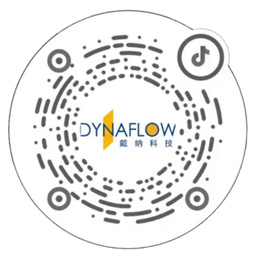Letting AI+robots work for scientists in the dark is cool | Chuangshiji
Published Time:
2025-06-30
Promoting scientific research from the "era of craftsmanship" to the "intelligent era", constantly exploring to make up for the shortcomings of high-end scientific instruments... Chi Haipeng knows that he is not fighting alone this time; behind him, there are strong teammates and strong support!
At 3 am, the city has fallen silent, the lights in the office buildings have long been extinguished, but the AI + Lights-out Laboratories testing area of Beijing Dynaflow Lab Solution Co., Ltd. (hereinafter referred to as "Dynaflow") in Fengtai Science and Technology Park Zone 3 is still in operation.

An automatic precision weighing robot uses a gripper to unscrew the bottle cap, uses ultrasound to detect the liquid level in the bottle, automatically installs a pipette and draws a sample, performs weighing detection... A series of actions are performed smoothly, much like a futuristic laboratory in a science fiction movie. This scene is the "daily life" of a laboratory that Dynaflow has painstakingly created using AI + robots over 5 years.
1. Entrepreneurship: From "Worker" to "Problem Solver"
In 2011, Chi Haipeng, a veteran technical expert who had worked for many years in a world-renowned scientific instrument foreign enterprise, turned to entrepreneurship and founded Dynaflow. Recalling his early entrepreneurial experiences, he said, "The most tiring thing about entrepreneurship is not the body, but the mind." As a technical manager in a large company, pressure can be passed on to colleagues, but entrepreneurship requires facing problems and solving them directly. It can be said that in the giant system, he was a "gear," but in entrepreneurship, he had to evolve into an "engine" himself.

At the beginning of its establishment, the team focused on two directions: intelligent laboratories and prefabricated modular laboratories. When peers were still building experimental benches, Dynaflow had already disassembled the laboratory into standardized "building blocks"—factory automated production and on-site rapid assembly. This laid the groundwork for the later intelligent revolution of the lights-out laboratory.
2. Breaking the Ice: Conquering the "Impossible Mission" in 4 Months
In the summer of 2020, Dynaflow faced its first major challenge—a fully unmanned project for a global daily chemical giant's factory.
At that time, Chi Haipeng was met with cold skepticism: "You have no cases and no experience, so why can you achieve what other large enterprises cannot?" When the negotiations reached an impasse, Chi Haipeng made a surprising proposal: "We will do it first, and payment will be made after successful acceptance. We will not sign any agreement beforehand, so you will not suffer any losses."
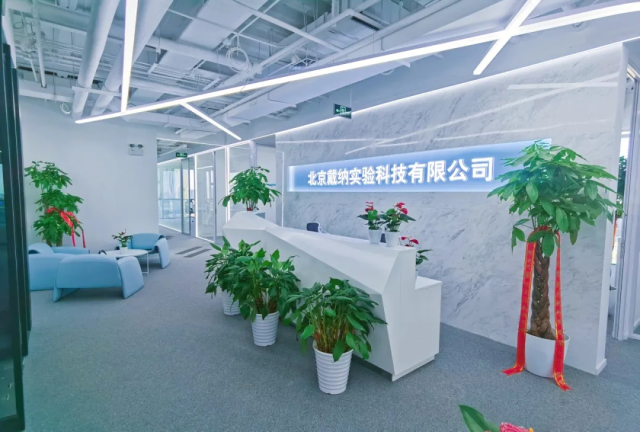
In the summer of 2021, the prototype was assembled. However, the test results were like a bucket of cold water—the shampoo and shower gel, due to their viscous and stringy nature, resulted in a weighing error of up to 0.5g, a significant difference from the daily chemical giant's requirement of 0.01g accuracy. "We thought we had completed 99.9% of the project, but in fact, we had only completed 10%, because the most difficult hurdle had not been overcome," recalled Chi Haipeng.
From that day on, the Dynaflow R&D team delved into the laboratory like "detectives." The laboratory researchers said that accurate measurement relied entirely on feel, which sounded like metaphysics, because "feeling" is something that cannot be replicated. However, they discovered the secret behind this "metaphysics": the experimenters would adjust the angle of the gun head according to the speed of the liquid stringing and would predict the contact height based on the surface tension—the ability to be so precise was actually tacit knowledge accumulated from hundreds or thousands of experiments.
They tried to translate "feeling" into algorithms using self-learning models. Chi Haipeng led the team to re-examine the requirements: detecting liquid depth, gun head insertion angle, stringing speed, surface tension... Multiple parameters were input into the AI model, simulating and debugging repeatedly. After a four-month battle, they finally cracked this hard nut.
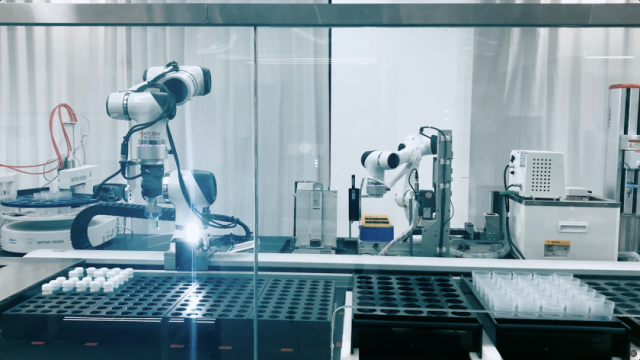
During the retest, the robotic arm accurately delivered 0.01 grams of shampoo into the instrument, the whole process taking less than 2 minutes—nearly 30 times faster than manual operation. At the end of 2024, the daily chemical giant sent a letter of thanks to Dynaflow, praising the stability of the sample measurement provided by Dynaflow's AI + Lights-out Laboratories.
3. Powering Up: Equipping the Laboratory with a "Brain" and "Hands"
If the unmanned factory project was "breaking the ice," opening the first door for the R&D and implementation of AI + Lights-out Laboratories, then the "lights-out laboratory" subsequently created by Dynaflow is more like a complete reconstruction of the traditional laboratory.
What is a "lights-out laboratory"? Simply put, a lights-out laboratory describes a scenario or state where experiments can be conducted with the lights off—here, AI is the "brain" and robots are the "hands." They work 24/7, freeing scientists from repetitive labor.

Traditional laboratories are like "handicraft workshops." Laboratory personnel need to prepare samples, weigh reagents, wash and rinse bottles, learn experimental operations, undergo safety training, conduct validation training, process experimental data, record experimental data... These tasks occupy more than half of the experimental time. Now, AI + robots have freed up this time.
Let's use data to illustrate how revolutionary this model is!
[1. Efficiency Improvement]
The daily workload of a lights-out laboratory ≈ 1 scientist working 480 days (two and a half years)
[2. Cost Reduction]
Traditional laboratories need to consider lighting, natural scenery, and humidity, temperature, and ventilation. Lights-out laboratories do not need to consider these factors, so energy consumption is 40% of the original, and the area can be reduced to 15% to 25% of the original.
Furthermore, lights-out laboratories use AI technology to automatically analyze data and even "predict" experimental results—like installing an "intelligent advisor" in the laboratory. "Laboratory safety is also a pain point." Chi Haipeng mentioned that an accident occurred recently in a laboratory due to illegal dumping of waste liquid, resulting in extensive burns to laboratory personnel. In traditional chemical laboratories, a single drop of highly toxic liquid can be fatal, and illegal operations can cause explosions. Lights-out laboratories remove people from the "danger zone."
4. The Future: Wishing All Scientists Have Their Own "JARVIS"
From overcoming obstacles to riding the waves, Dynaflow's lights-out laboratory solutions have gradually been implemented in the four fields of chemistry, materials, new energy, and food, illuminating the R&D lines of Unilever, PetroChina, Sinopec, CNOOC, Shenghong Petrochemical, and Shangtai Technology. A laboratory revolution is underway in the "darkness!"
"The development of Dynaflow benefits from the strong support of Beijing's innovation ecosystem." Chi Haipeng said, "In December 2024, the company received financial support from the Beijing Municipal Commission of Science and Technology and the Zhongguancun Management Committee for the technology service industry special project—enterprise efficiency improvement project, used for the technological innovation of 'AI + Lights-out Laboratories.' At the same time, the Beijing Municipal Commission of Science and Technology and the Zhongguancun Management Committee also assisted us in connecting with industrial funds, AI for Science upstream and downstream enterprises, and leading banks, helping us expand the market, obtain funds, and strengthen our core competitiveness."
Chi Haipeng also told the editor that in January 2025, Beijing issued the "Beijing Action Plan for Accelerating the Innovative Development of "Artificial Intelligence + New Materials" (2025-2027)", mentioning "accelerating the promotion of the new paradigm of AI empowering new material R&D." On May 30, Beijing issued the "Action Plan for the Innovative Development of High-end Scientific Instruments," proposing to promote "AI+" to empower instrument innovation, especially proposing plans for the construction of lights-out laboratories. "This is a key deployment for scientific and technological self-reliance and self-improvement, and it has also brought significant benefits to Dynaflow."
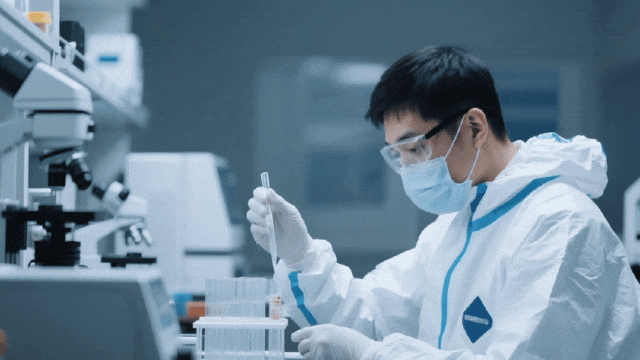
In the future, we hope that robotic arms will integrate various functional modules, like Transformers, enabling all laboratory testing work through rapid combination and replacement. This is not science fiction; it's what Chi Haipeng and his team are working on. Of course, with the support of favorable policies, Dynaflow will also develop in the field of high-end scientific instruments. "One direction is robotic instrumentation, and the other is AI-enabled instruments."
Promoting scientific research from the "era of craftsmanship" to the "intelligent era," continuously exploring to make up for the shortcomings of high-end scientific instruments... Chi Haipeng knows that he is not fighting alone; behind him are strong teammates and solid support!
Hot Articles
Share to

